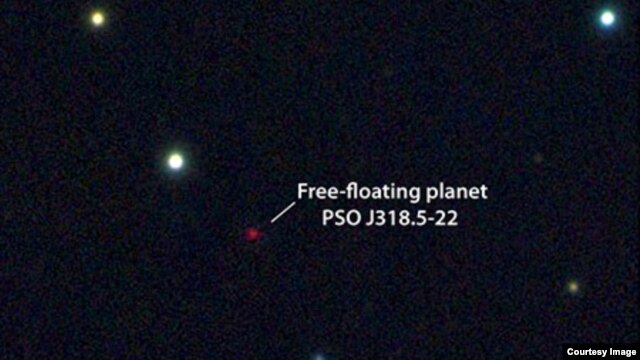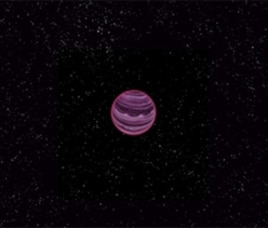Astronomers Discover Lone Planet with No Star
Multicolor image from the Pan-STARRS1 telescope of the free-floating planet PSO J318.5-22, in the constellation of Capricornus. The planet is extremely cold and faint, about 100 billion times fainter in optical light than the planet Venus. (N. Metcalfe &
Astronomers have discovered a lone planet, floating in space without a star.
This free-floating planet, dubbed PSO J318.5-22, is just 80 light years away from Earth and has a mass six times that of Jupiter. The planet is only 12 million years old—a newborn in planet lifetimes.
"We have never before seen an object free-floating in space that that looks like this. It has all the characteristics of young planets found around other stars, but it is drifting out there all alone,” explained team leader Dr. Michael Liu of the Institute for Astronomy at the University of Hawaii at Manoa. “I had often wondered if such solitary objects exist, and now we know they do.”
Exoplanets are being discovered at an astounding pace, with about a thousand found by indirect methods such as wobbling or dimming of their host stars induced by the planet. However, only a handful of planets have been directly imaged, all of which are around young stars, usually less than 200 million years old.
While the discovery of a starless planet alone is noteworthy, scientists think PSO J318.5-22 will provide insight into how the so-called gas giant planets such as Jupiter and Saturn develop.
“Planets found by direct imaging are incredibly hard to study, since they are right next to their much brighter host stars. PSO J318.5-22 is not orbiting a star so it will be much easier for us to study. It is going to provide a wonderful view into the inner workings of gas-giant planets like Jupiter shortly after their birth,” said Dr. Niall Deacon of the Max Planck Institute for Astronomy in Germany and a co-author of the study.
PSO J318.5-22 was identified from its faint and unique heat signature by the Pan-STARRS 1 (PS1) wide-field survey telescope on Haleakala, Maui. Follow-up observations using other telescopes in Hawaii show that it has properties similar to those of gas-giant planets found orbiting around young stars.
This free-floating planet, dubbed PSO J318.5-22, is just 80 light years away from Earth and has a mass six times that of Jupiter. The planet is only 12 million years old—a newborn in planet lifetimes.
"We have never before seen an object free-floating in space that that looks like this. It has all the characteristics of young planets found around other stars, but it is drifting out there all alone,” explained team leader Dr. Michael Liu of the Institute for Astronomy at the University of Hawaii at Manoa. “I had often wondered if such solitary objects exist, and now we know they do.”
Exoplanets are being discovered at an astounding pace, with about a thousand found by indirect methods such as wobbling or dimming of their host stars induced by the planet. However, only a handful of planets have been directly imaged, all of which are around young stars, usually less than 200 million years old.
While the discovery of a starless planet alone is noteworthy, scientists think PSO J318.5-22 will provide insight into how the so-called gas giant planets such as Jupiter and Saturn develop.
“Planets found by direct imaging are incredibly hard to study, since they are right next to their much brighter host stars. PSO J318.5-22 is not orbiting a star so it will be much easier for us to study. It is going to provide a wonderful view into the inner workings of gas-giant planets like Jupiter shortly after their birth,” said Dr. Niall Deacon of the Max Planck Institute for Astronomy in Germany and a co-author of the study.
PSO J318.5-22 was identified from its faint and unique heat signature by the Pan-STARRS 1 (PS1) wide-field survey telescope on Haleakala, Maui. Follow-up observations using other telescopes in Hawaii show that it has properties similar to those of gas-giant planets found orbiting around young stars.






No comments:
Post a Comment